
Kitchen
How Long Does a Kitchen Remodel Take?
04.01.2025
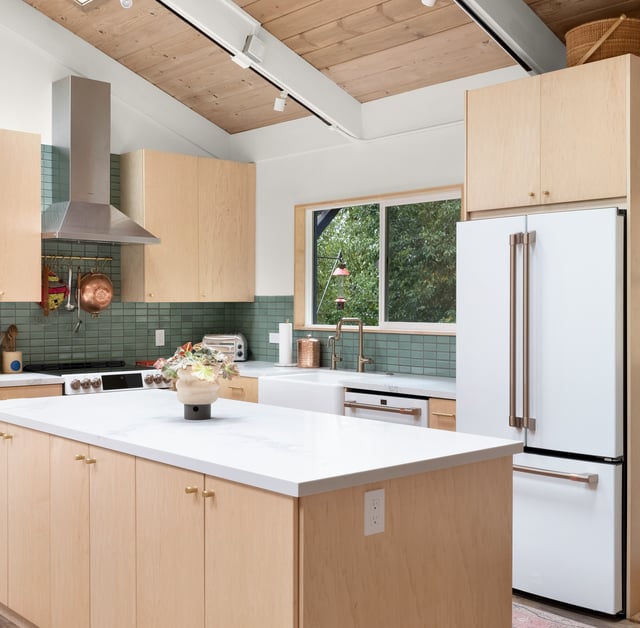
In This Article
Thinking about renovating your home in the San Francisco Bay Area? Exciting! Whether you’re dreaming of a sleek modern kitchen, a spa-like bathroom, or finally opening up that cramped floor plan, a well-planned renovation can completely transform your space—not to mention boost your home’s value in one of the country's most competitive real estate markets.
Of course, home renovations here come with their own unique quirks. The Bay Area’s high labor costs, strict building codes, and unpredictable permitting process mean planning ahead is key. Plus, with trends leaning toward open, airy designs, sustainable materials, and smart home upgrades, there’s a lot to consider before diving in.
That’s where this guide comes in. We’ll walk you through the biggest cost factors, what to expect when budgeting, and how to navigate the renovation process confidently. Whether you’re tackling a small upgrade or a full home makeover, the right strategy can help you stay on track, maximize your investment, and—dare we say—actually enjoy the process.
Renovating in the Bay Area isn’t just about picking out pretty tile and debating paint swatches—it’s about understanding the unique factors that drive up costs so you can plan (and budget) accordingly. From high labor rates to city-specific permit hurdles, knowing what you're up against can help you avoid sticker shock and keep your project on track.
If you’ve ever wondered why your contractor’s estimate made you spit out your coffee, it’s because the Bay Area's labor costs are among the country's highest. With a competitive job market and a high cost of living, skilled tradespeople charge a premium—because, well, they have to. Plumbers, electricians, and carpenters here don’t just bring expertise; they bring price tags that reflect the region’s sky-high wages. The good news? Paying for quality work now can save you from costly mistakes later.
Like everything else in the Bay Area, materials are more expensive. Between supply chain fluctuations, the demand for sustainable and high-end finishes, and the reality that many materials must be transported long distances, costs add up quickly. Want reclaimed wood from a 100-year-old barn in Napa? That’s going to cost you. Dreaming of an imported marble countertop? Get ready to pay a premium. Even basic materials, like drywall and lumber, tend to be pricier here than in other parts of the country.
Ah, the infamous Bay Area permitting process. Depending on where you live, getting approval for your renovation can be a test of patience and persistence. Cities like San Francisco and Berkeley are notorious for their strict regulations, long wait times, and surprise fees. Even a seemingly simple project might require multiple permits, inspections, and sign-offs. And if your home is considered historic? Buckle up. The key here is planning ahead and working with professionals who understand local codes—because nothing derails a project faster than a permit stuck in bureaucratic limbo.
A small bathroom refresh will obviously cost less than a full-scale home makeover, but even minor projects can get expensive in the Bay Area. Expanding square footage, reconfiguring layouts, and upgrading major systems (like plumbing or electrical) add to the complexity and cost. The more you change, the more you pay—but thoughtful renovations can make every dollar count. Prioritizing must-haves over nice-to-haves can help you stick to your budget while still achieving a major transformation.
Every room in your home comes with its own set of renovation costs, and in the Bay Area, those costs can add up quickly. Whether you're upgrading a kitchen, refreshing a bathroom, or adding square footage, knowing what to expect can help you budget smarter and avoid surprises. The key is figuring out where to invest (like quality craftsmanship and high-traffic areas) and where you can save (maybe that fancy imported tile isn't a must-have, after all).
If you’ve ever watched a home renovation show, you know the kitchen is where the real money disappears. In the Bay Area, a kitchen remodel typically costs between $50,000 and $150,000, depending on the level of upgrades.
A budget-friendly kitchen refresh (new countertops, repainting cabinets, swapping hardware) can stay under $30,000, while a luxury remodel with custom everything can break the $150,000 mark.
Bathrooms may be small, but they pack a pricey punch. Expect to pay $20,000 to $60,000 for a remodel, with luxury renovations climbing past $100,000.
Master bathrooms tend to cost more due to larger square footage and spa-like upgrades, while guest bathrooms are usually more budget-friendly.
Unlike kitchens and bathrooms, living room updates don’t require extensive plumbing or appliances—unless you’re building a secret bookcase door (which, honestly, go for it). Costs range from $10,000 to $40,000, depending on:
Thinking about adding more space? In the Bay Area, this is a major investment, with costs ranging from $400 to $800 per square foot.
Outdoor spaces matter in the Bay Area, where indoor-outdoor living is part of the appeal.
Long story short: Every room comes with its own set of costs, but with smart planning, you can prioritize where to splurge and where to save.
Renovating in the Bay Area isn’t just expensive—it’s different and more expensive depending on where you live.
San Francisco vs. Oakland vs. Silicon Valley
In San Francisco, everything costs more—because, well, it’s San Francisco. Contractors charge a premium, and historic homes mean tricky permitting and surprise structural issues. Costs can be lower across the Bay in Oakland, but demand is rising, especially for modern upgrades. Meanwhile, in Silicon Valley, expect sky-high prices, thanks to tech money and luxury preferences (yes, someone will pay six figures for a smart toilet).
Suburban costs (Marin, San Mateo, etc.)
Marin and San Mateo homeowners enjoy more space, which means bigger projects and bills. Custom builds, and eco-friendly renovations are especially popular here—because sustainability and a great view go hand in hand.
Urban constraints and permitting challenges
Tight lots, strict historic preservation rules, and multi-layered permitting processes make urban renovations in SF and parts of the Peninsula a test of patience. Get ready for paperwork and long wait times—because in the Bay Area, even bureaucracy is pricey.

Renovating in the Bay Area doesn’t mean draining your savings (though it might sometimes feel that way). With some smart choices, you can keep costs under control while still getting a great result.
Choosing materials strategically (local vs. imported)
That hand-painted Italian tile? Stunning. But also very expensive. Consider locally sourced materials—they cost less and help you avoid shipping delays and supply chain headaches. Plus, using reclaimed wood or Bay Area-milled stone adds a touch of local charm without the hefty price tag.
Renovating during off-peak construction seasons
If you can, avoid peak spring and summer months when contractors are busiest (and charging their highest rates). Winter renovations can mean more availability and better deals—plus, who doesn’t love the smell of fresh paint over the holidays?
Managing labor costs
Labor is your biggest expense, so be strategic. Get multiple quotes, bundle projects to save time, and consider a mix of DIY where it makes sense (but maybe leave the electrical work to the pros).
If you think picking out countertops is the hardest part of renovating, just wait until you meet the Bay Area permitting process. It’s a maze of paperwork, fees, and waiting—lots and lots of waiting.
Key permits required for common renovation projects
Planning to knock down a wall? Add a deck? Upgrade your kitchen? You’ll likely need permits for structural changes, plumbing, electrical work, and even window replacements. No, you can’t just do it and hope no one notices—because they will.
City-specific regulations
San Francisco is infamous for its strict (and slow) permit approvals, especially for historic homes. Oakland tends to be a little easier, while Palo Alto? Let’s just say if your renovation affects a tree, expect a full review process.
Costs and timelines for permit approvals
Permits can range from a few hundred to several thousand dollars, and approval can take weeks—or months. Plan ahead because patience is just as essential as your budget in the Bay Area.
Finding a good contractor in the Bay Area is like dating—there are many options, but only a few are truly the right fit. You want someone reliable, experienced, and who won’t ghost you mid-project.
How to find trusted professionals
Start with referrals from friends, neighbors, or local online groups (Nextdoor can be a goldmine). Check reviews, verify licenses, and always, always ask for references. A great contractor will have a solid track record—if they hesitate to provide proof of past work, that’s your cue to run.
This selection process may feel daunting, but Bay Area homeowners are in luck: Block Renovation makes it simple. Our renovation experts will custom pick 3 top-quality licensed contractors from Block’s elite network and match them with you based on your project scope.
Block’s robust vetting process ensures that every contractor we recommend has:
When you get your customized contractor recommendations from Block, you’ll get the opportunity to schedule site visits to meet those contractors in your home and compare project proposals and quotes. From there, you’ll be able to choose the contractor who’s best fit for your project, so you can kick off your renovation with confidence and a trusted partner.
Questions to ask before hiring
Before signing anything, ask: What’s your experience with projects like mine? Who will be on-site daily? How do you handle unexpected issues? (Because there will be unexpected issues.) Also, get a clear breakdown of costs and timelines in writing—because “a few weeks” in contractor-speak can sometimes mean next year.
The idea of saving money by going full DIY is tempting—after all, how hard can it be to install a backsplash or replace a light fixture? But before you start watching YouTube tutorials and stocking up on tools you’ll only use once, let’s talk about when DIY actually makes sense.
When DIY makes sense
If it’s cosmetic—like painting walls, swapping cabinet hardware, or assembling IKEA furniture (with only mild frustration)—DIY can be a great way to cut costs. Small projects that don’t involve plumbing, electrical, or structural work are usually fair game. Plus, there’s nothing more satisfying than saying, “Yeah, I did that.”
Hidden costs of DIY mistakes
Mess up a tile job? It’ll cost double to fix. Miswire an outlet? You could be calling an electrician and a fire department. Some things are best left to the pros—because sometimes, saving money up front means paying way more later.
Home renovations aren’t cheap—especially in the Bay Area. Unless you’ve got a secret vault of cash (in which case, congrats!), you’ll probably need to explore financing options. Here’s how you can fund your dream remodel without selling a kidney.
If you’ve built up equity in your home, a home equity loan or home equity line of credit (HELOC) can be a solid option. These loans let you borrow against your home’s value, usually at lower interest rates than credit cards or personal loans. A home equity loan gives you a lump sum, which is great for big, one-time projects. A HELOC works more like a credit card, perfect for phased renovations. Just remember—your home is on the line, so spend wisely.
No home equity? No problem. Personal loans can cover renovation costs, though they often have higher interest rates. Some banks and credit unions even offer renovation-specific financing with better terms. Just be sure to shop around—because paying 12% interest on your dream kitchen takes the shine off that quartz countertop.
Believe it or not, there are government programs that can help cover renovation costs—especially for energy-efficient upgrades or accessibility improvements. Check out local, state, and federal grants, or look into FHA 203(k) loans if you’re buying and renovating simultaneously. Free money? Yes, please!
Home renovations can be exciting but a little like a reality show where things go off the rails fast. Avoid these common pitfalls so your remodel doesn’t become a never-ending project (or a financial nightmare).
If there’s one universal truth about renovations, it’s this: it will cost more than you think. Even with the best planning, surprises lurk behind every wall. That’s why adding at least a 10-20% cushion to your budget is a must. Otherwise, halfway through your kitchen remodel, you’ll be eating takeout on a plywood counter indefinitely.
Skipping permits to “save time” is a rookie mistake. Bay Area cities don’t mess around—if you get caught (and you will), expect hefty fines, delays, or even having to undo your work. Always check city-specific rules before swinging a sledgehammer.
Think your renovation is simple? Surprise! Your house might have hidden water damage, termite infestations, or outdated wiring. Always inspect before starting—or risk costly mid-project detours.
A bad contractor can turn your dream remodel into a disaster. Do your research, check references, and don’t just go with the cheapest bid—because “budget-friendly” can quickly turn into “never finished.”
Renovating in the Bay Area is no small feat, but with smart planning, the right team, and a realistic budget (yes, really), you can make it happen. Key takeaways? Expect higher costs, plan for permits, and always have a contingency fund.Start by outlining your must-haves, setting a budget with some wiggle room, and finding a contractor who won’t disappear mid-project.
Not sure where to begin? Take the guesswork out of planning with this handy renovation quiz—because the fewer surprises, the better!
What is the average cost of a kitchen renovation in the SF Bay Area in 2025?
How do labor costs in the SF Bay Area compare to the national average?
What permits are required for home renovations in San Francisco?
Are there cost-effective ways to renovate sustainably in the Bay Area?
How can I finance a major home renovation project in 2025?
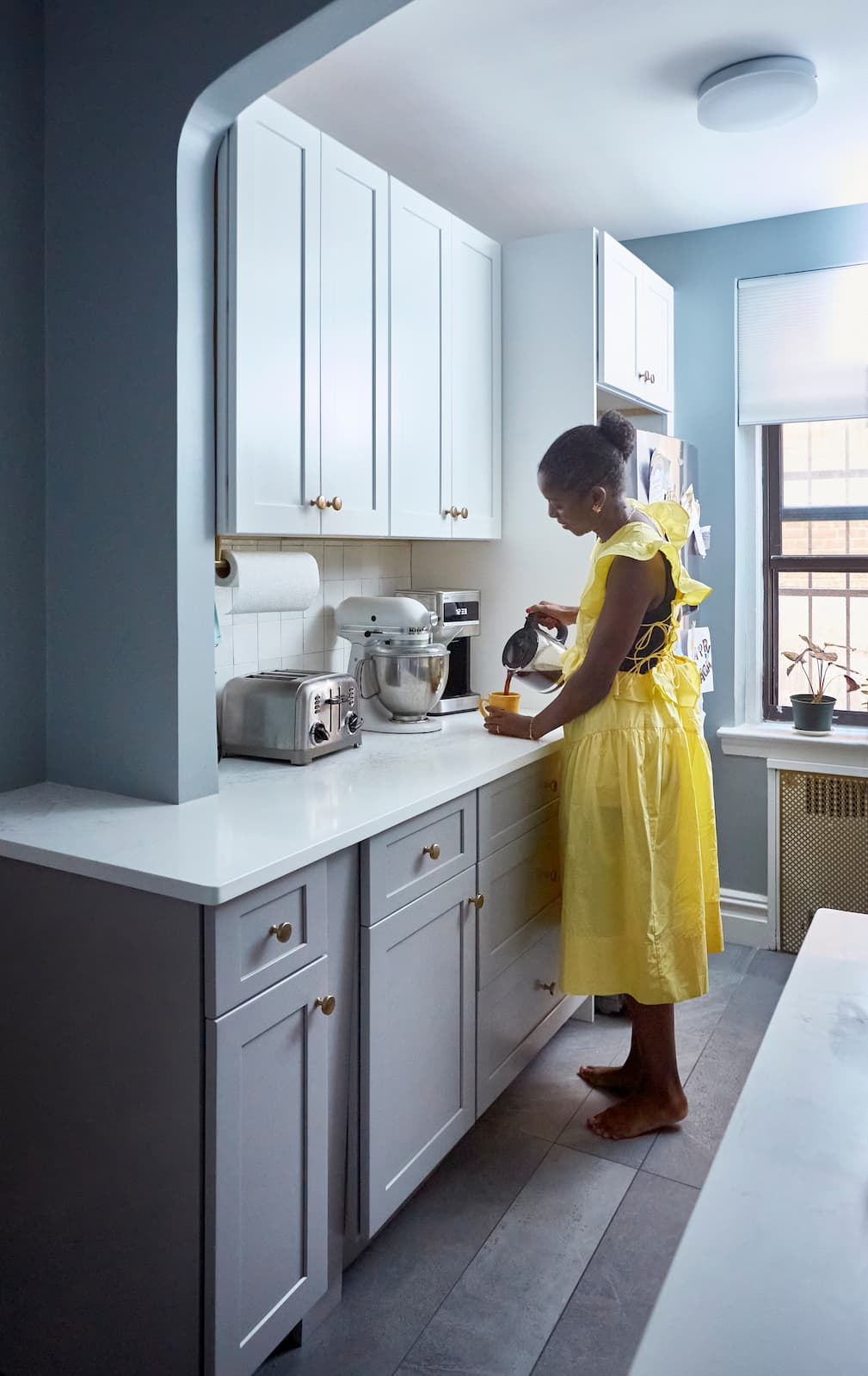
Renovate confidently with Block
Easily compare quotes from top quality contractors, and get peace of mind with warranty & price protections.
Thousands of homeowners have renovated with Block

4.5 Stars (100+)

4.7 Stars (100+)

4.5 Stars (75+)

Kitchen
How Long Does a Kitchen Remodel Take?
04.01.2025
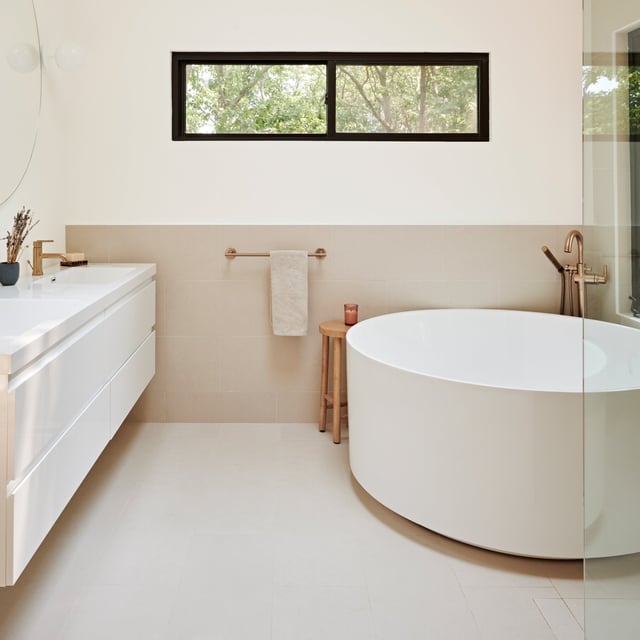
Cost
A Complete Guide to Bathroom Renovation Costs in Fairfield County (2025)
03.19.2025
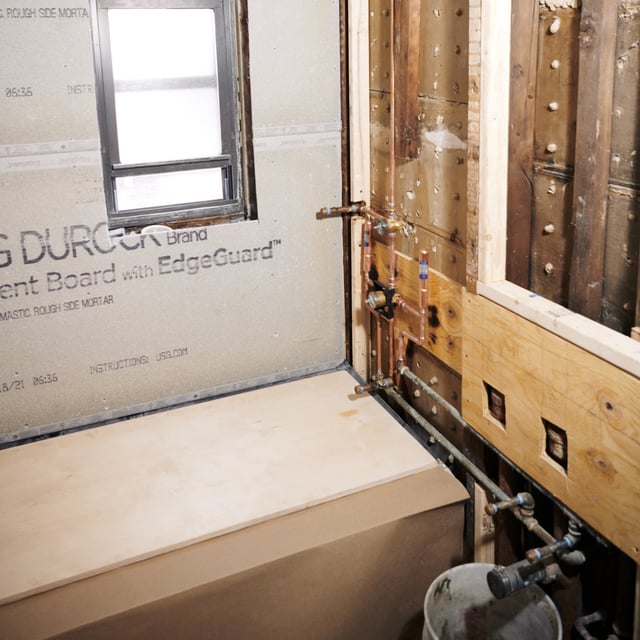
Cost
How Much Does It Cost to Add a Bathroom to a House?
03.19.2025
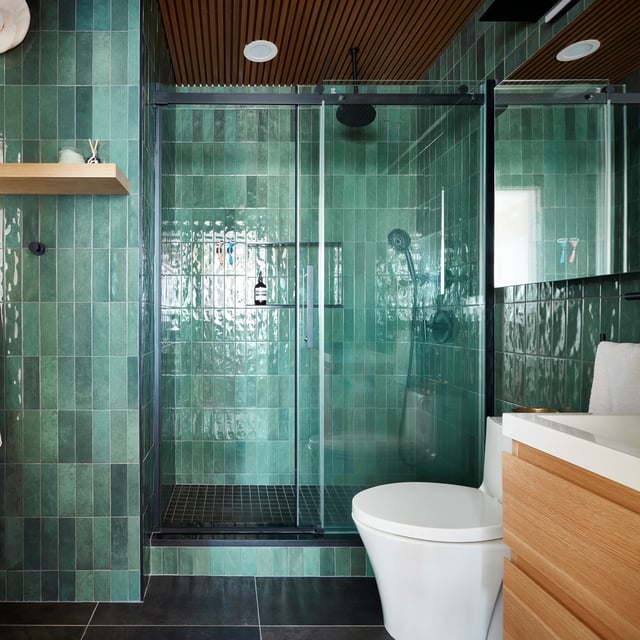
Cost
How Much Does it Cost to Install a Shower?
03.14.2025
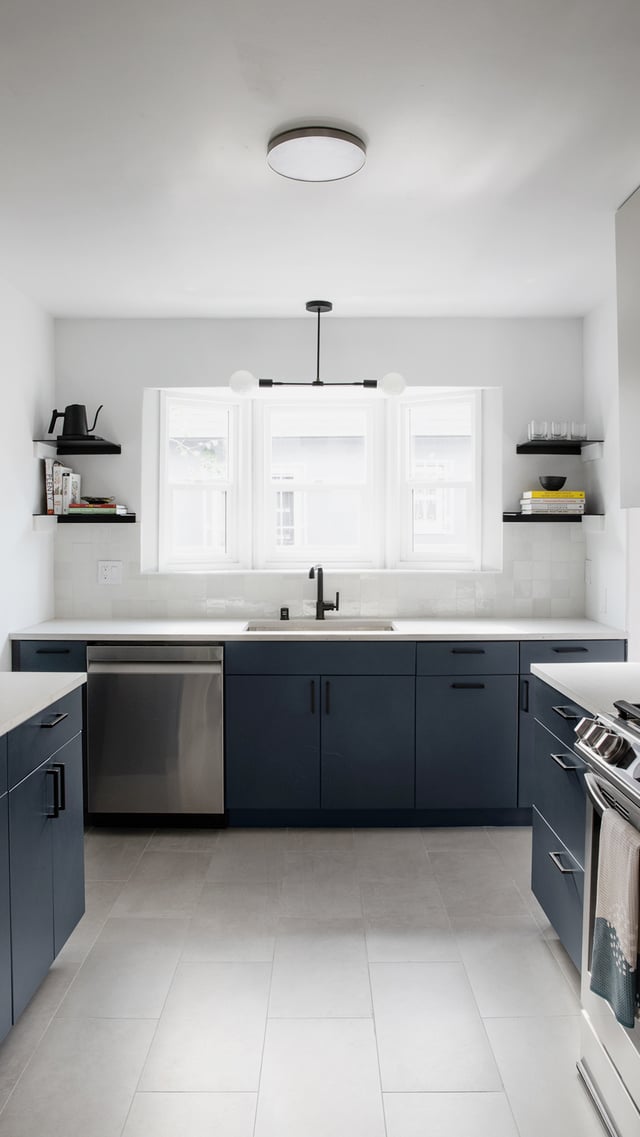
Cost
How Much Does a Home Renovation Cost in LA?
03.13.2025
Renovate confidently